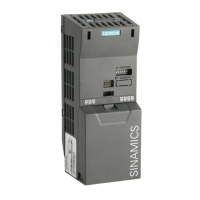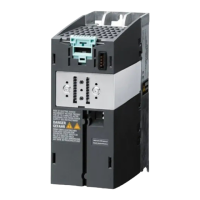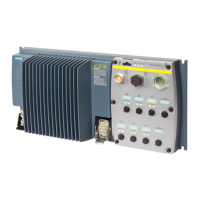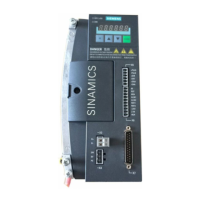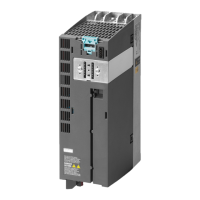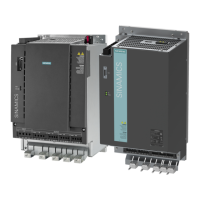Electrical installation
4.5 EMC-compliant design
Inverter chassis units
52 Operating Instructions, 07/2016, A5E00331449A
Use anti-interference elements
● If relays, contactors, and inductive or capacitive loads are connected, the switching relays
or contactors must be provided with anti-interference elements.
● Cables that are subject to or sensitive to interference should be laid as far apart from
each other as possible.
● All cables are to be laid as close as possible to grounded enclosure parts such as
mounting plates or cabinet frames. This reduces both noise radiation and interference
injection.
● Reserve cores of signal and data cables must be grounded at both ends to achieve an
additional shielding effect.
● Long cables should be shortened or laid in noise resistant areas to avoid additional
connecting points.
● If it is impossible to avoid crossing cables, conductors or cables that carry signals of
different classes must cross at right angles, especially if they carry sensitive signals that
are subject to interference.
– Class 1:
unshielded cables for ≤ 60 V DC
unshielded cables for ≤ 25 V AC
shielded analog signal cables
shielded bus and data cables
operator panel interfaces, incremental/absolute encoder lines
– Class 2:
unshielded cables for > 60 VDC and ≤ 230 VDC
unshielded cables for > 25 VAC and ≤ 230 VAC
– Class 3:
unshielded cables for > 230 VAC/VDC and ≤ 1000 VAC/VDC
● Shields must not be used to conduct electricity. In other words, they must not
simultaneously act as neutral or PE conductors.
● Apply the shield so that it covers the greatest possible surface area. You can use ground
clamps, ground terminals, or ground screw connections.
● Avoid extending the shield to the grounding point using a wire (pigtail) because this will
reduce the effectiveness of the shield by up to 90%.
● Attach the shield to a shield bar directly after the line inlet into the cabinet. Insulate the
entire shielded cable and route the shield up to the device connection, but do not connect
it again.
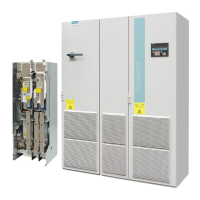
